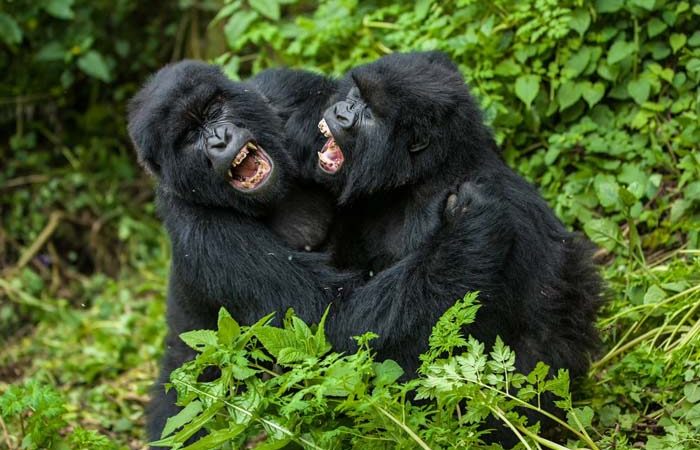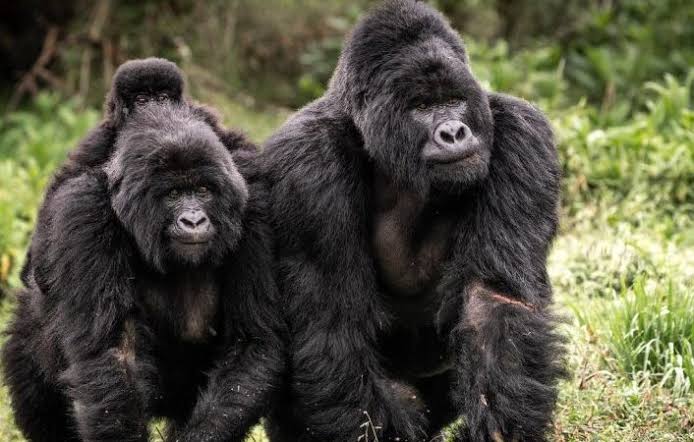
The Best Time for Gorilla Trekking in Rwanda
The Best Time for Gorilla Trekking in Rwanda
Wildlife enthusiasts consider gorilla trekking in Rwanda among the top African wildlife encounters. Thousands of nature enthusiasts visit Rwanda every year to observe the elusive mountain gorillas living within the misty mountains bordering Volcanoes National Park. When is the ideal period to experience gorilla trekking throughout Rwanda? Knowledge of Rwanda’s seasonality combined with climate conditions and gorilla trekking statistics enables visitors to make ideal choices for their mountain gorilla tours.
Rwanda’s environmental conditions and trekking requirements
Rwanda shows tropical highland climate characteristics that result from its elevated position. Rwanda experiences mild climate changes because the destination does not experience severe temperature shifts like other African locations. Trekking conditions in Rwanda change dramatically between two different wet seasons and two dry seasons throughout the year.
Tourists consider the extended dry months of June through September as the prime time for Rwanda gorilla trekking because they deliver excellent photographic opportunities and clear trails and skies. The forest’s dry state creates better conditions for hiking and permits gorillas to become more active and visible during the trek.
The trekking conditions during the short dry season (mid-December to February) make this another desirable period for visitors. Travelers who want fewer people on their trails during peak times prefer to visit Rwanda during the short dry season for its dry weather conditions.
During the lengthy rainy season (March to May) the trails become excessively muddy while rain showers occur frequently which makes trekking more difficult. Permits during this time frame are cheaper and there are fewer visitors in the park because it happens to be the off-peak tourist period.
The short rainy period from October through mid-December brings uncertain weather conditions. During this season the weather remains less wet than the long rainy period yet creates dangerous slippery conditions. A multitude of experienced travelers regard the vivid vegetation and sparse tourism during this period as attractive elements.
Why June to September Is the Peak Gorilla Trekking Season
To experience the finest gorilla trekking in Rwanda you must visit during June, July, August and September. The long dry season spans these months when the weather conditions remain the most predictable. The best visibility conditions allow visitors to easily spot gorilla families inside the dense vegetation and as they feed from bamboo shoots. The high tourism period in Rwanda means booking your gorilla trekking permits at least three to six months beforehand to secure your spot.

Benefits of Gorilla Trekking During the Wet Season
Some tourists choose wet season gorilla trekking above the dry season because it provides both lower prices and distinctive travel experiences. The rainy months, particularly April and May provide lower priced gorilla permits together with reduced accommodation costs. Visitors can enjoy dense vegetation and shorter trekking distances during this period because the gorillas choose to stay in lower parts of the park.
The challenges of wet season trekking exceed the comfort levels of most people. Travelers should prepare for wet terrain alongside dangerous paths while rain showers can occur during the afternoon hours. To succeed with your trek you will require waterproof hiking boots together with a poncho and gaiters which are vital equipment.
Booking Tips and Permit Availability
Rwanda Development Board (RDB) controls the administration of gorilla trekking permits within the country. Gorilla trekking permits in Rwanda cost USD $1,500 per person for 2025 since they provide guided access to habituated gorilla families for one hour. The number of permits remains restricted to protect the gorillas’ peace and establish a lasting tourism approach.
The peak season booking demand for permits reaches its limit most intensely during July and August because these months match European summer vacation dates. Travelers who can be flexible with their dates should choose February or September to visit Bwindi Impenetrable National Park since the trails remain dry and the park experiences reduced visitor numbers.
Wildlife and Cultural Experiences Beyond Gorilla Trekking
Rwanda presents its visitors with a wide range of wildlife experiences and cultural encounters throughout every season after gorilla trekking becomes the main attraction. Your additional travel plans should include golden monkey trekking and hiking Mount Bisoke and visiting the Karisoke Research Center. Ambler Heritage Book explores Rwanda’s cultural roots by offering unique exchanges between visitors and local people at the Iby’Iwacu Cultural Village.
Rwanda contains two major national parks which include the Big Five destination of Akagera National Park and the chimpanzee-tracking and canopy-walking attraction of Nyungwe Forest National Park. Visiting Rwanda during dry seasons makes it possible to fully experience these attractions without restrictions.
Final Thoughts on The Best Time for Gorilla Trekking in Rwanda
Gorilla trekking opportunities in Rwanda depend on your personal travel requirements for the best experience. The long dry season between June and September provides the most suitable conditions for travelers who want clear weather together with easy hikes and top-quality photographs. The rainy months of the year give adventurous travelers unexpected cost-effective opportunities to explore Rwanda’s hidden gems.
Rwanda provides visitors with a secure and properly managed mountain gorilla trekking opportunity that links them to the extremely rare mountain gorilla species. Visitors who decide to trek gorillas in Rwanda can create everlasting memories during any time of year.
Prepare sensibly along with proper packing to experience an once-in-a-lifetime encounter in Rwanda’s Thousand Hills landscape.


